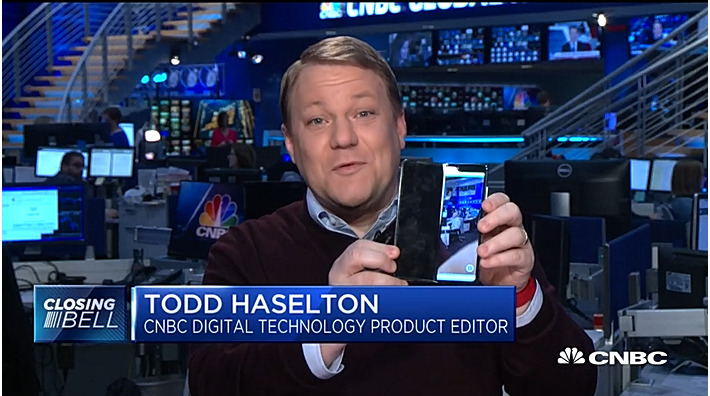
An image showing a defect of a Samsung Galaxy Fold uploaded on Twitter on Apr. 18.
With Samsung Electronics in a bind following widespread reports of its Galaxy Fold, a foldable smartphone, showing defects just two days after tester models were released, the next question is when Samsung’s competitors such as Huawei and Xiaomi will launch their foldable models. While these three companies are banking on plastic screens, Apple has been notably applying itself to developing foldable glass.
Huawei, which is set to release its Mate X foldable phone this coming July, stated that the glitches with the Galaxy Fold have no bearing on its own products. During a telephone call with the Hankyoreh on Apr. 18, a Huawei representative said the company won’t be altering its plans for a global launch in July. “There aren’t any technical issues with our products and our phone folds in a different way, so it’s not reasonable to compare us to Samsung,” the representative said.
In a bid to forestall concerns about defective products, Xiaomi, which released a video of a phone with a double fold in January, said it’s planning to release the finished phone, rather than tester models.

An image uploaded by CNBC showing a Samsung Galaxy Fold with a cracked screen.
Since Royole’s FlexPai was panned at MWC 2019 in February, the company has focused on improving product quality.
The hubbub about the defective Galaxy Fold isn’t necessarily welcome news for Samsung’s Chinese competitors, however, since the foldable phones that Huawei, Xiaomi and Royole are developing are also covered in plastic film, rather than reinforced glass. While a plastic surface bends more easily, it’s less durable than glass, and nicks and wrinkles can appear after just a few folds. On top of that, the three Chinese firms’ foldable phones are more vulnerable to external shocks, since they fold outward, in contrast with the Galaxy Fold’s inward bend. The upshot is they could fall prey to similar problems as the Samsung product.
Some time ago, LG Electronics opted for the strategy of a dual screen rather than a foldable phone, having concluded that neither the technology nor the market were ready for foldables. “All these companies have a production volume of about 1 million units for their foldable phones, so we decided it would be better to focus on a dual screen. We’re not planning to release a foldable phone for the time being,” said a spokesperson for LG.
Apple has a longer-term goal in mind, suggested by its investment in developing bendable glass. This project is in the hands of Apple supplier Corning, which makes the glass for its iPhones. So far, Corning has managed to develop glass that’s 0.1mm thick and that can bend to a radius of 5mm. In 2017, Apple promised to provide its supplier with US$200 million in R&D funding.
John Bayne, who is in charge of Corning’s glass division, told the US press that the company expects to be able to make foldable glass within a few years.
By Shin Da-eun and Song Gyung-hwa, staff reporters
Please direct comments or questions to [english@hani.co.kr]





